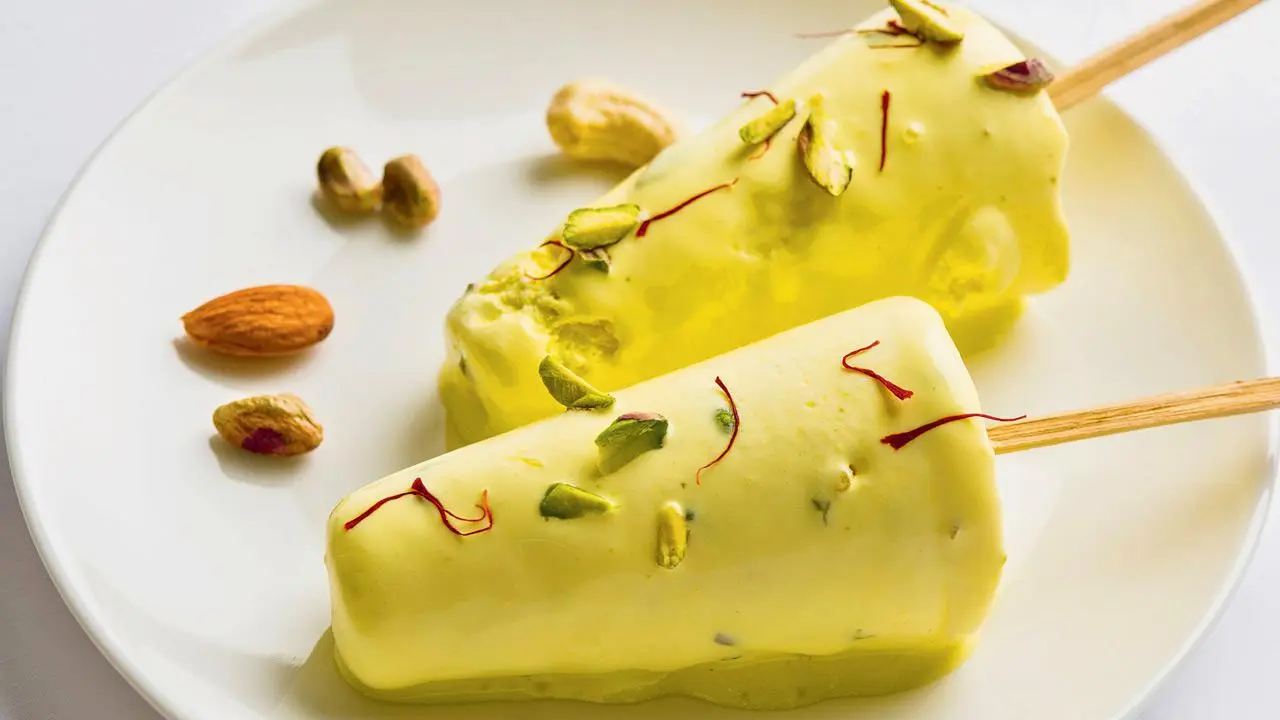Chef Edward Lee of Shia" data-medium-file="https://i0.wp.com/newspack-washingtoncitypaper.
s3.amazonaws.com/uploads/2025/04/chef_edward1.

jpg?fit=300%2C300&ssl=1" data-large-file="https://i0.wp.com/newspack-washingtoncitypaper.
s3.amazonaws.com/uploads/2025/04/chef_edward1.
jpg?fit=780%2C780&ssl=1" />Restaurants are no longer merely places to dine. They are innovation labs, philosophical propositions, and changemakers. In D.
C., a new generation of mission-driven restaurants is rising to focus on everything from eliminating plastic and reducing waste to encouraging personal wellness and providing career training.Take Shia, the modern Korean fine dining restaurant in the Union Market neighborhood founded by James Beard Award-winning chef Edward Lee and his nonprofit, The Lee Initiative.
The sleek 22-seat restaurant, which takes its name from the Korean word for “seed,” offers a seven-course tasting menu that costs $185 plus another $75 for the optional beverage pairing. Since the restaurant is set up to be a research project, it operates as a nonprofit, largely powered by two corporate investors—Chase Sapphire and OpenTable—as well as fundraising, traditional investors, private investment, and low-interest loans.“I realize the minute you say nonprofit restaurant, 99 percent of the public imagines something that’s a feel-good restaurant for ex-inmates, battered women, or helping the homeless, not a restaurant where you would take your wife out for an anniversary or to celebrate a birthday,” Lee says.
“We’re showing that luxury and community and social responsibility are things that don’t have to be mutually exclusive.”Shia tackles three issues: zero gas, waste reduction, and the elimination of plastic, the latter being one of Lee’s longtime pet peeves about the industry’s outsize negative impact on the environment. There is limited data on the subject, but in 2021 the reuse advocacy organization Upstream estimated nearly 1 trillion disposable food service products are used annually in the United States.
Obvious offenders such as take-out containers, straws, stirrers, and cup lids are only a portion of the problem. There’s also the original packaging for ingredients, storage containers, garbage bags, Sharpie pens, the piping for the plumbing, and the list goes on. Overall, Lee and his team identified roughly 35 “points of plastic” in a typical restaurant operation.
So as Shia was being designed and operations began late last year, the team kept asking the question, “How does a restaurant operator eliminate or find alternatives for all this plastic?”Lee believes the most difficult plastic product to replace in a kitchen setting is cling wrap. In some instances, the kitchen team at Shia uses muslin, beeswax paper, or wet cheesecloth instead. But the lack of cling wrap also forced Lee and his colleagues to rethink what they’re making, how they make it, and how much.
If there is a puree or sauce on a dish, they only create enough for that day, so there’s as little leftover as possible. Any amount that remains can be incorporated into the family meal for the staff.Other eliminations led to further innovations.
Plastic molds, used to create desserts in geometric or lifelike shapes, are a common item in a kitchen’s pastry department. Those were nixed, as were the squeeze bottles, so don’t expect dots of sauce on the plates. Instead, the chefs simply use a spoon to place sauces.
“Everything looks more organic and feels more natural,” Lee says. “It is very oddly old-fashioned, yet it feels very modern at the same time.”This may be all well and good for a single restaurant, but are these changes replicable on a larger scale? In Lee’s mind, the chief barriers for operators to follow suit are inconvenience and cost.
To eliminate the inconvenience element, all of Shia’s findings and innovations are being carefully tracked and the team is creating a chart offering up nonplastic alternatives for each plastic element in a restaurant, along with their cost differentials and pros and cons. The restaurant plans to periodically release research papers on its grand experiment, and the team aims to release a larger blueprint of their work at the end of the year, all of which will be freely available to download.Shia is also tracking expenses related to going plastic-free.
When the restaurant reaches its one-year anniversary in November, this total cost will be tallied and the costs will be passed along to guests accordingly. Lee acknowledges that most restaurants won’t be able to fully eliminate plastic, but that’s not the goal. “If I do this and only three other restaurants go 100 percent plastic free, that’s a failure,” he says.
“But if I can do this and inspire 1,000 restaurants to go 15 percent plastic free, that’s a lot of plastic that we’ve eliminated from the environment.”Shia is a decidedly personal endeavor. “I can’t do this forever, and I may not have too many restaurants left in me,” he says.
“So if this is one of the last ones, I want it to really mean something.”Johanna Hellrigl Wilder, chef and co-owner of Ama, the Northern Italian restaurant in Navy Yard, is on her own mission, focusing on four pillars: health, wellness, nourishment, and the community.During the pandemic in early 2021, three weeks after having COVID, the former chef of Doi Moi and Mercy Me had her first child.
During her son’s birth, she suffered from cholestasis of pregnancy, producing an intense itching and burning sensation all over her body while interfering with her liver’s ability to function properly. It was a grueling experience that stretched over 92 hours, including doses of Pitocin and antibiotics, and ending with a C-section. In the aftermath, she says, she was neglected by her medical team.
In a moment when she was hoping for joy, she experienced an onslaught of trauma instead.After that ordeal, she didn’t feel well but couldn’t get satisfactory answers or remedies from her doctor. Ultimately, she got certified in integrative nutrition, a nutritional therapy that investigates the psychological, physiological, and environmental factors affecting someone’s health.
Although she had been thinking about opening a restaurant for years, her newfound lens altered her vision. “I want to take care of people more than just with the food that’s on their plate,” she says. “I want to nourish them.
”At Ama, which Hellrigl Wilder co-owns with her husband, bartender Micah Wilder, all ingredients are free of artificial colors, chemicals, or added flavors and preservatives. There are no industrial seed oils. There’s an emphasis on organic produce grown using regenerative farming techniques and sustainably sourced proteins, such as wild-caught fish and pasture-raised poultry.
“It’s about slow living, slow food, and eating wholesome, quality ingredients to live your most optimal life,” she says. “It’s not doing anything that’s technologically innovative. It’s really trying to go backward in time.
”To embrace a sustainability mindset on the operational side of the equation, the kitchen got a complete rethink. It’s zero gas, all electric. Hellrigl Wilder eliminated single-use plastics in favor of alternatives such as compostable cling wrap for bakery production and paper cups and straws that biodegrade in 180 days.
There’s also a double catalytic carbon filtration water system, which removes contaminants while retaining vital minerals. “Why buy the best ingredients to then just wash them with tap water?” she muses.All these elements don’t add to the cost of a meal at Ama, says Hellrigl Wilder, which she estimates is comparable to one at a similar tier establishment, But elements, such as the $30,000 water filtration system, did increase the initial investment.
She sees it as a worthwhile outlay, both philosophically and from a business perspective, since she estimates between 80 to 90 percent of guests are drawn to Ama because of its missions.But if a diner is just coming in for a plate of pasta and a glass of wine and isn’t interested in reading the mission-related materials on the menu and website, or hearing about them from the staff, then that’s fine too. “My goal is not to breathe down people’s throats,” she says.
The same is true if you stop at Emma’s Torch cafe in Brookland to grab a bacon, egg, and cheese buttermilk biscuit sandwich for breakfast. It’s easy to miss that the bustling restaurant is also a job training center.The culinary university is the brainchild of Kerry Brodie, who found inspiration while volunteering at a homeless shelter in D.
C., where she met refugees hunting for employment, and reports she was reading of understaffing in restaurants. What if she could help solve both problems at once? After attending the Institute of Culinary Education in New York City and a food business boot camp to learn the basics of the restaurant industry, she founded Emma’s Torch in 2016, its name a nod to poet Emma Lazarus, author of The New Colossus, the poem that appears on the base of the Statue of Liberty.
The nonprofit social venture enrolls students for an 11-week culinary training program: four and half weeks of classroom work followed by six and a half weeks of operations training working in one of their cafes. In addition to the Brookland outlet, there are two in New York City; another location is set to open in Silver Spring next year. Students are paid throughout their participation.
“We feel that accessing programs like this shouldn’t put people more into a more vulnerable situation,” says interim executive director Kira O’Brien.Currently, there are 42 students in the program, including 16 at their Brookland location. (In February, the organization celebrated its 500th graduate.
) Emma’s Torch assists with job placement, with 88 percent of students being placed within two weeks of graduation. In D.C.
, graduates found positions at the Smithsonian museums, in D.C. public schools, the World Bank, Compass Coffee, and Tatte.
O’Brien sees their format as a win-win for students and employers. “We all know the horror stories about the high rates of turnover across the industry,” she says. “No one benefits when you have to rehire every four months.
What does it look like if we as an industry really invest in long-term sustaining careers and long-term sustaining people? I think that changes the game for everybody.”.
Food

The Rise of Mission-Driven Restaurants

Chef Edward Lee of Shia" data-medium-file="https://i0.wp.com/newspack-washingtoncitypaper.s3.amazonaws.com/uploads/2025/04/chef_edward1.jpg?fit=300%2C300&ssl=1" data-large-file="https://i0.wp.com/newspack-washingtoncitypaper.s3.amazonaws.com/uploads/2025/04/chef_edward1.jpg?fit=780%2C780&ssl=1" />Restaurants are no longer merely places to dine. They are innovation labs, philosophical propositions, and changemakers. In D.C., a new generation of mission-driven restaurants is rising to focus on everything from eliminating plastic and reducing waste to encouraging personal wellness and providing career training. Take Shia, the modern Korean fine dining restaurant in the Union [...]















